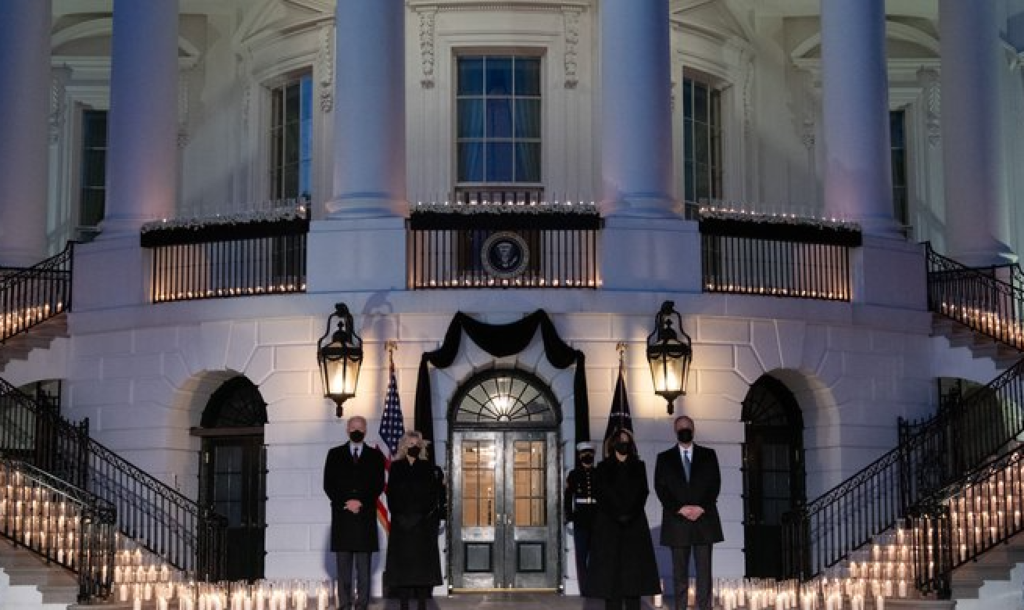

President Biden is asking Americans to mark the 500,000 deaths with a moment of silence at sunset Monday. He’s also ordered flags on all federal buildings lowered to half-staff for five days. The disease has killed at least 100,000 people in the past five weeks and was the leading cause of death in the country in January, ahead of heart disease, cancer and other ailments, according to the Kaiser Family Foundation. Since last February the disease began to ravage nursing homes and the five boroughs of New York, frequently striking the most vulnerable on account of age, poor health, job requirements or crowded living conditions. Now, around 2,000 people die from the disease every day on average, according to data from Johns Hopkins University, down from a high of over 3,000 a day on average in mid-January. The pandemic’s deadliest day in the U.S. so far has been January 12 when 4,400 people died.
The NPR report lays out that death count in the US far exceeds that of other countries — a fact that health experts attribute to the scattered, patchwork pandemic response from the Trump administration. The specialists cite the shortages of personal protective equipment, testing supplies and contact tracing capacity as some of the missing pieces that could have saved lives. Putting in place the public health measures was not the focus of the previous administration. Neither was ensuring that workplaces for those who had to go to work were safe, nor securing adequate personal protective equipment for workers. The politicization of public health messaging, on topics such as masking and the severity of the disease in comparison with flu, also confused and endangered the public, say health experts.
Perhaps the most heartbreaking fact about reaching half a million U.S. deaths, is that the toll is still rising. Though new infections and hospitalizations are slowing after a midwinter peak, the country has a long way to go to end the pandemic. The present situation is described as a race between the vaccine and new more transmissible variants Americans will need to stick to safe behavior to keep the virus from surging badly again.
IHME is now forecasting the U.S. may surpass 600,000 deaths by June.
According to health experts, although we are several months into vaccinating this is not the time to drop the guard and start gathering, because that’s going to erase all the progress that we’ve recently made. Still many speak with measured optimism about the future. People who work in hospitals and in funeral homes are witnesses to the loss than many Americans can avoid.
PROCESSING GRIEF
The toll of witnessing these deaths has largely fallen on front line health care workers.
Signs of hope ahead do not soften the tragedy of each life lost to the illness. The losses include children, and adults of all ages and ethnicities. More than 3,400 health care workers in the U.S. have died from COVID-19, according to numbers from The Guardian and KHN It’s hard to fathom hundreds of thousands of lives in the U.S., and some 2 million more around the world, cut short by the pandemic.
For health workers who help the families say the final goodbyes, it has been extremely hard. It appears that we as a nation have not coped with this. It’s almost as if these are individual losses to individual families, but that they are not seen as a loss to the whole society.
The COVID-19 memorial tribute last month, on the eve of President Biden’s inauguration, in which lights were placed around the Lincoln Memorial reflecting pool, was the first formal acknowledgment of the pandemic’s death toll in the U.S. by the executive branch of the federal government. For most of the past year the burden of processing the grief has fallen on health care and funeral home workers.
Edited NPR Reporting